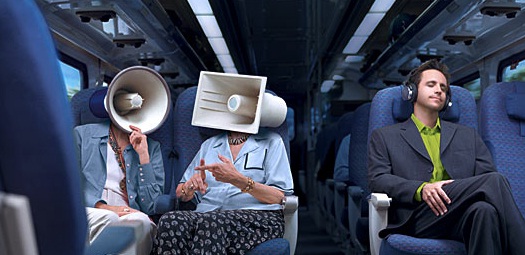These two types of headphones are often confused with another. Here are some of their differences.
Noise-Cancelling Headphones:
This type of headphones utilizes an active noise reduction system. They basically produce an electronic frequency to cancel out white noise. The degree of success varies according to the brand of headphones you are using. They usually cancel out airplane engines, subway train noise and track noise. They actually don’t cancel noise but reduce noise. They usually require a power source such as a triple A battery in one earphone or two batteries in an external case.
These headphones are usually comfortable to wear but they do tend to create some pressure in the user’s eardrums. Some users are more sensitive to this pressure than others.
If you board a train, these will reduce the whoosh that comes from fan noise but when you go out, they won’t probably cancel out the heavy thuds of bus tires and road rumble. You also won’t be able to detect the noise-cancelling capability once you listen to music.
Noise-Isolating Headphones:
These are usually in-ear headphones. They use a passive system which means they simply seal the ear with different foam canal tips. They provide around 30db noise reduction so the music that the user hears is enhanced. These headphones are lightweight and compact and they don’t’ need batteries.
The noise-isolating capabilities of these headphones also depend on the brand, the size and shape of the earphone. Some are comfortable to wear and some are not. These earphones are great for travelling as they are small and compact. They are also no-fuss to wear.
These in-ear headphones don’t give the user eardrum pressure that is related to the noise-cancelling headphones. Some of these headphones even have more effective noise-hushing capability over a broader range of treble, bass and midrange frequencies but they do let a bit more of high-frequency and squealing noises in than noise-cancelling headphones.
End Notes:
When it comes to sound quality, it does not matter if you use noise-cancelling or noise-isolating headphones. That depends on the brand that you choose. Some headphones will perform better in noisy environments. Some will perform better indoors than outdoors. Where you listen to headphones will greatly affect their sound. You can actually hear the difference when you ride a train, bus or commute outside. You can also compare it to when you are just at home. If you are going to use the headphones while commuting, use noise-cancelling headphones. If you want to use headphones while commuting and while at home, use noise-isolating headphones. If you want to use the headphones exclusively at home, go for a full-size headphone.




